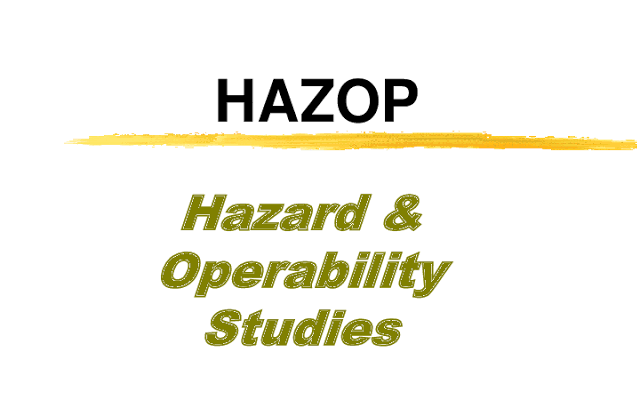INTRODUCTION OF HAZOP:
HAZOP is an analysis method that was developed for use with new processes JO the chemical industry. Its strength is that it's hello problems to be identified even before a body of experience has been developed for a given process/system. Thoughts originally intended for use with new processes it need not to be limited to new operations.
HAZOPs works very well with odd process/systems. HAZOP consist of farming 18 of experience knowledgeable people from a variety of background relating to the process/system. The team members brainstorm about potential hazards. The health and safety professional should chair the team and serve as a facilitator. The chairman role is to draw out and record the ideas of team members; make sure that one member does not dominate for intermediate other members; Anchorage maximum participations from all members; assist members in combining ideas where appropriate to form better ideas.
Hazards and Operability Reviews ( HAZOP ):
A HAZOP proceeds in a step-by-step manners. These states are summarised as follow:- Select the process system to be analysed.
- Form the team of experts.
- Explain the h a z o p process to all team members.
- Establish goals and time frames.
- Conduct brainstorming sessions.
- Summarize all inputs.
An example of a form that can be used to help organise and focus and brainstroming sessions. 1 can also be used for summarising the results of the brainstorming sessions. This particular exam for involves a plastic mixing process.
Only one component in the process flow gate number 1 has been analysed. Eat the floor Gate does not work as intended, there will be no flow, Too little flow, or too much flow. Each condition will result in a specific problem. Action necessary to correct each situation has been recommended. Every critical point, sometimes referred to as a node, in the process would be analysed in a similar manner.
HAZOPs have the same thickness as FMEAs: They predict problems associated wind systems/process failures. However, these are technological failures. HAZOPs do not factor human error into the equation. Saints human error is Show after a factor in accidents this is a weakness that must be dealt with. The next section sets forth guideline for analysing human error.
Human Error Analysis ( HEA )Techniques:
HEA, as described in the contacts this chapters used to predict human errors and not as an after the fact process. Alphabets the records of past accidents can be studied for to identify Trends that can, in turn, be used to predict accidents. This should be done as part of an accident investigation. HEA should be used to identify hazardous before they cause accidents.
Two approaches to HEA can be affective: (i) observing employees at work and noting hazards ( the task analysis approach); (ii) actually performing job tasks to get a first-hand feel for hazards. Regardless of how the HEA is conducted, it's a good idea to perform it in conjunction with FMEAs and HAZOPs. This will enhance the effectiveness of FMEAs, HAZOPs and HEAs.



Comments
Post a Comment